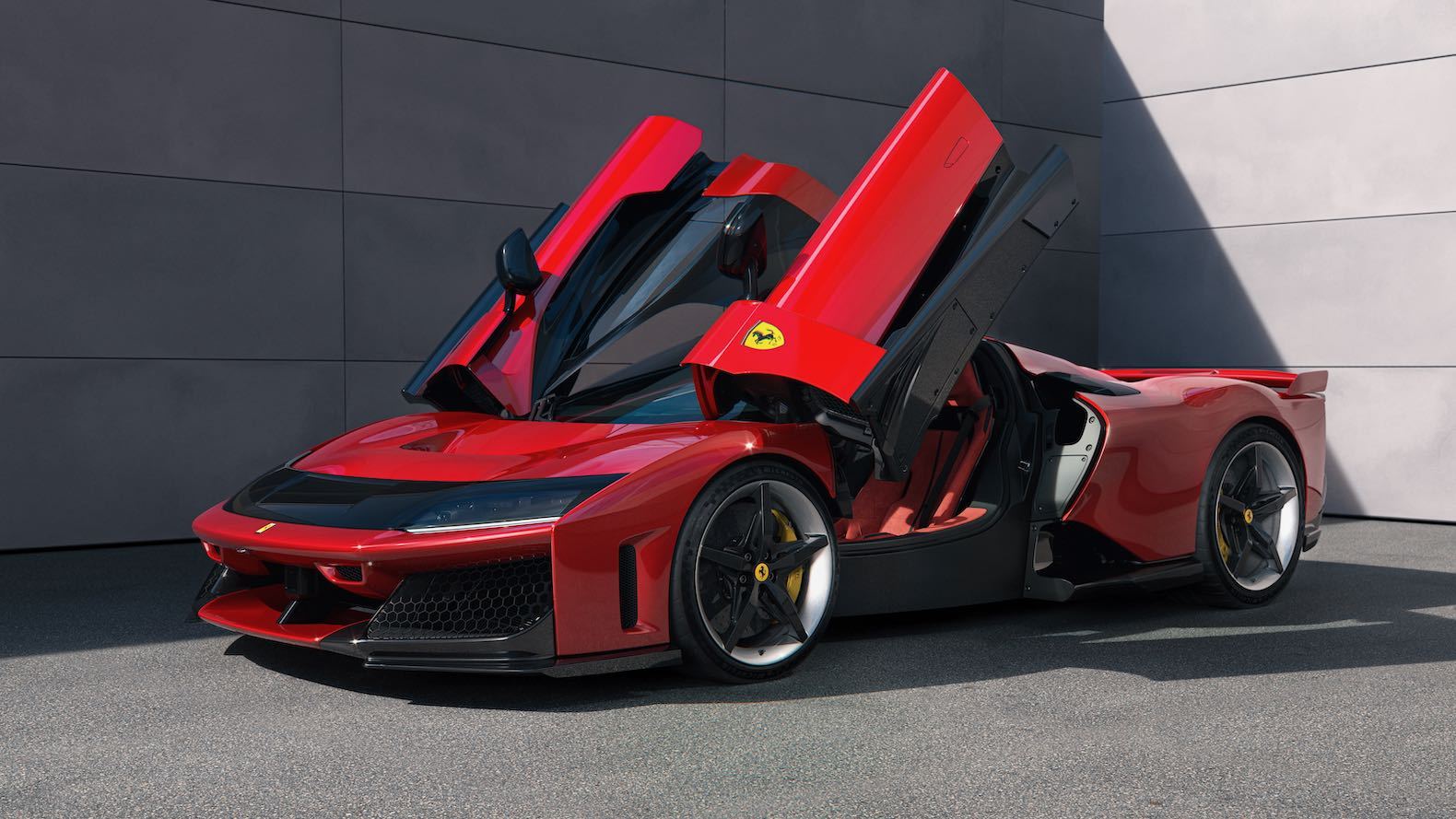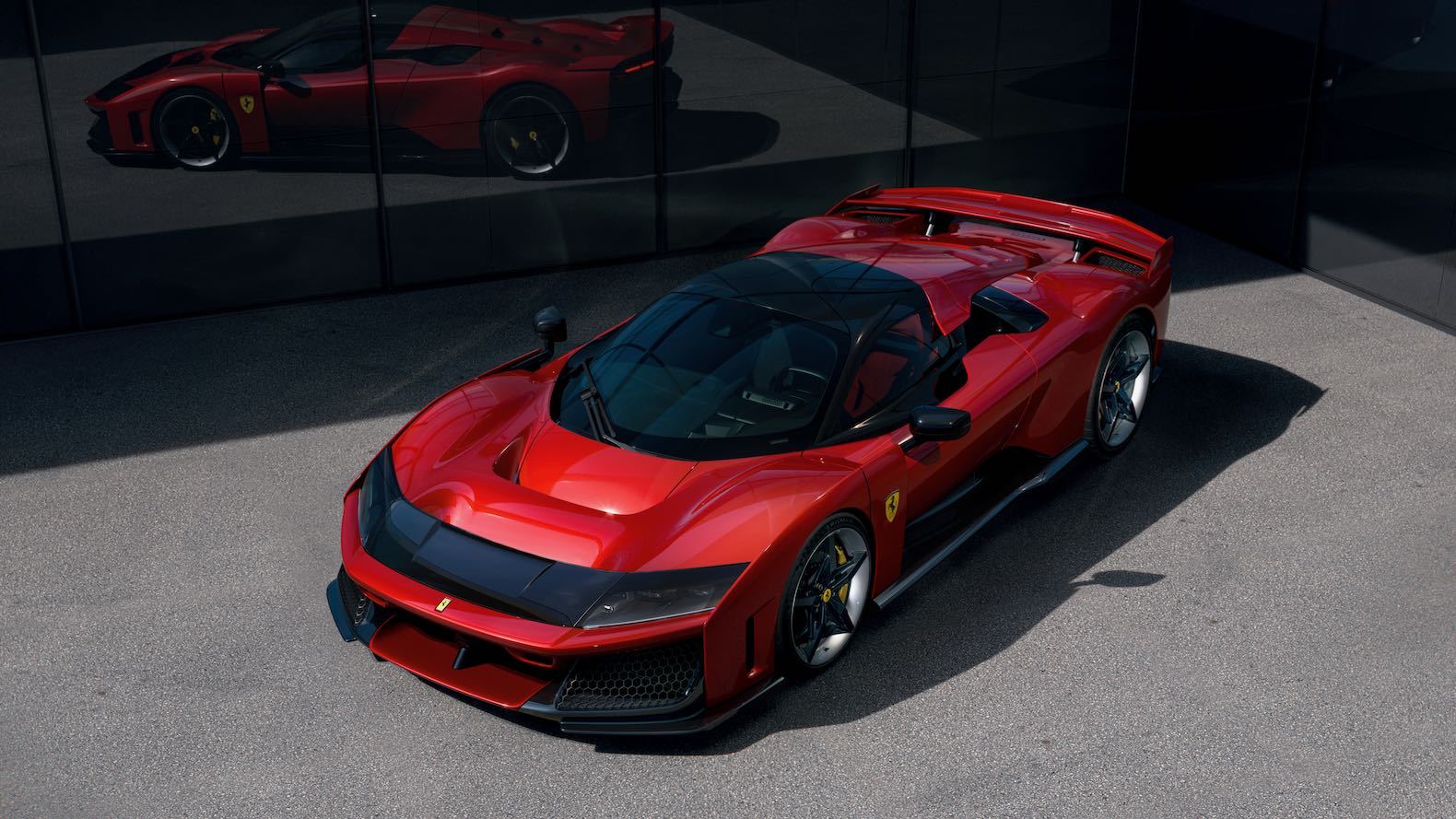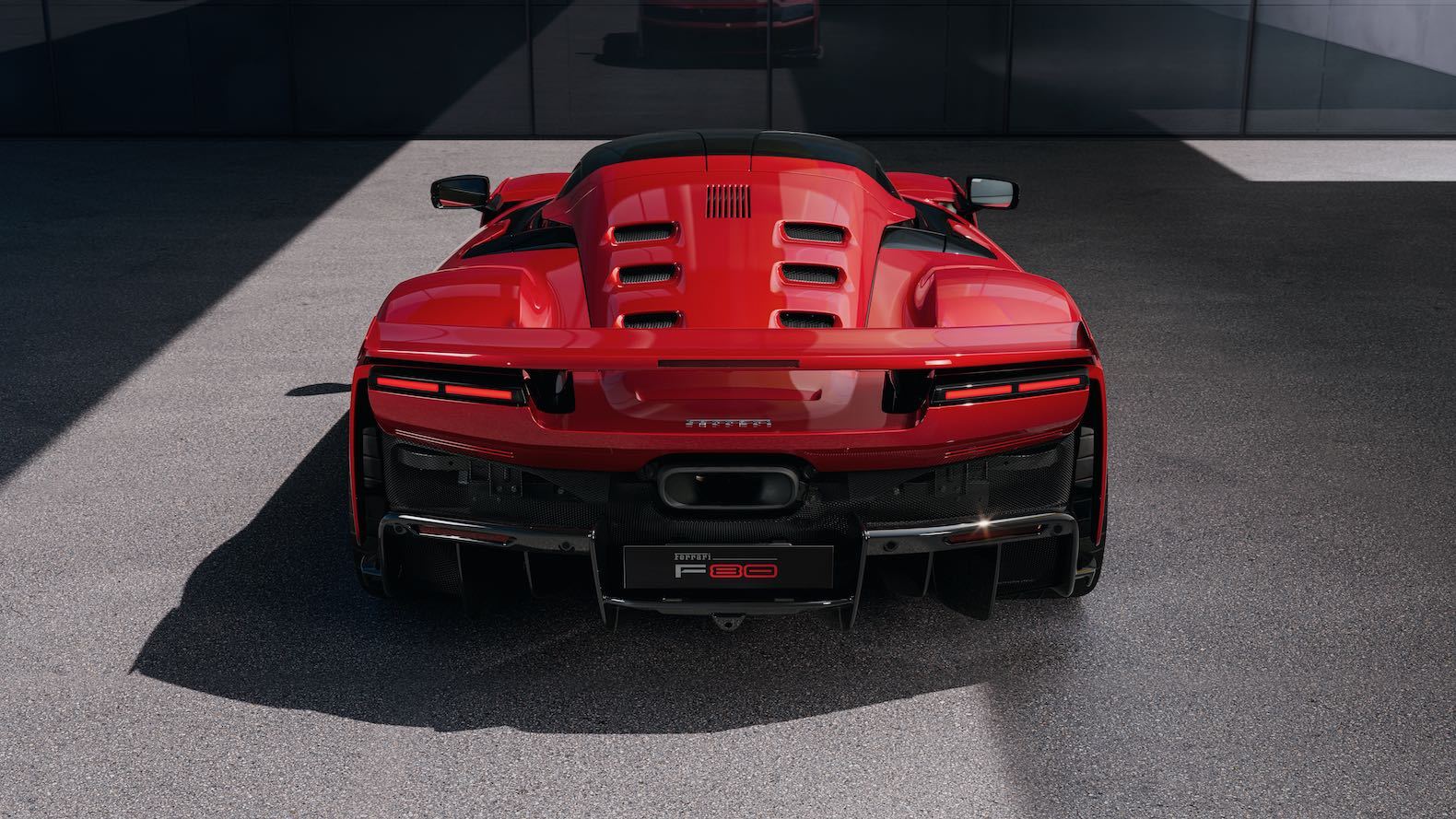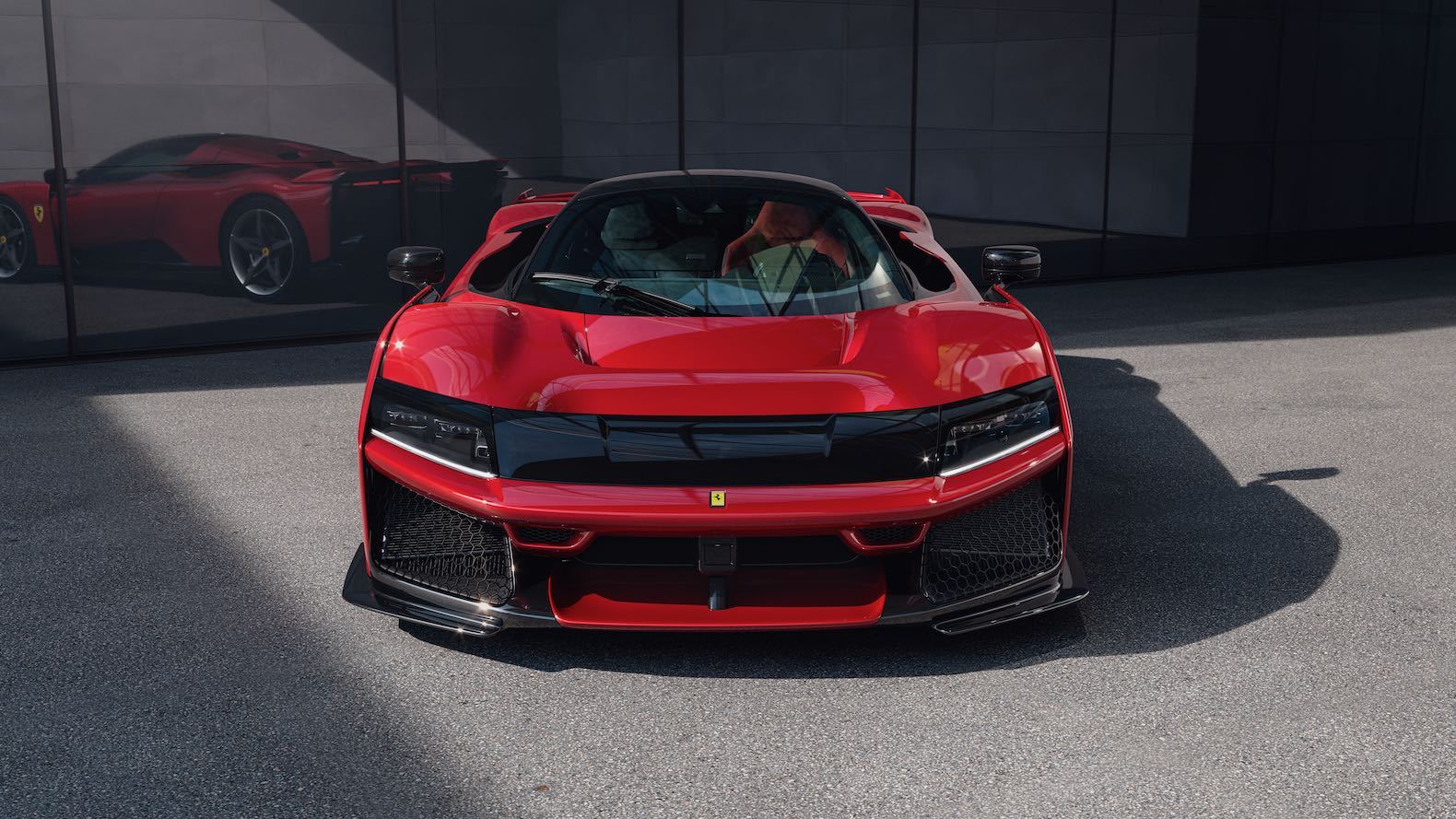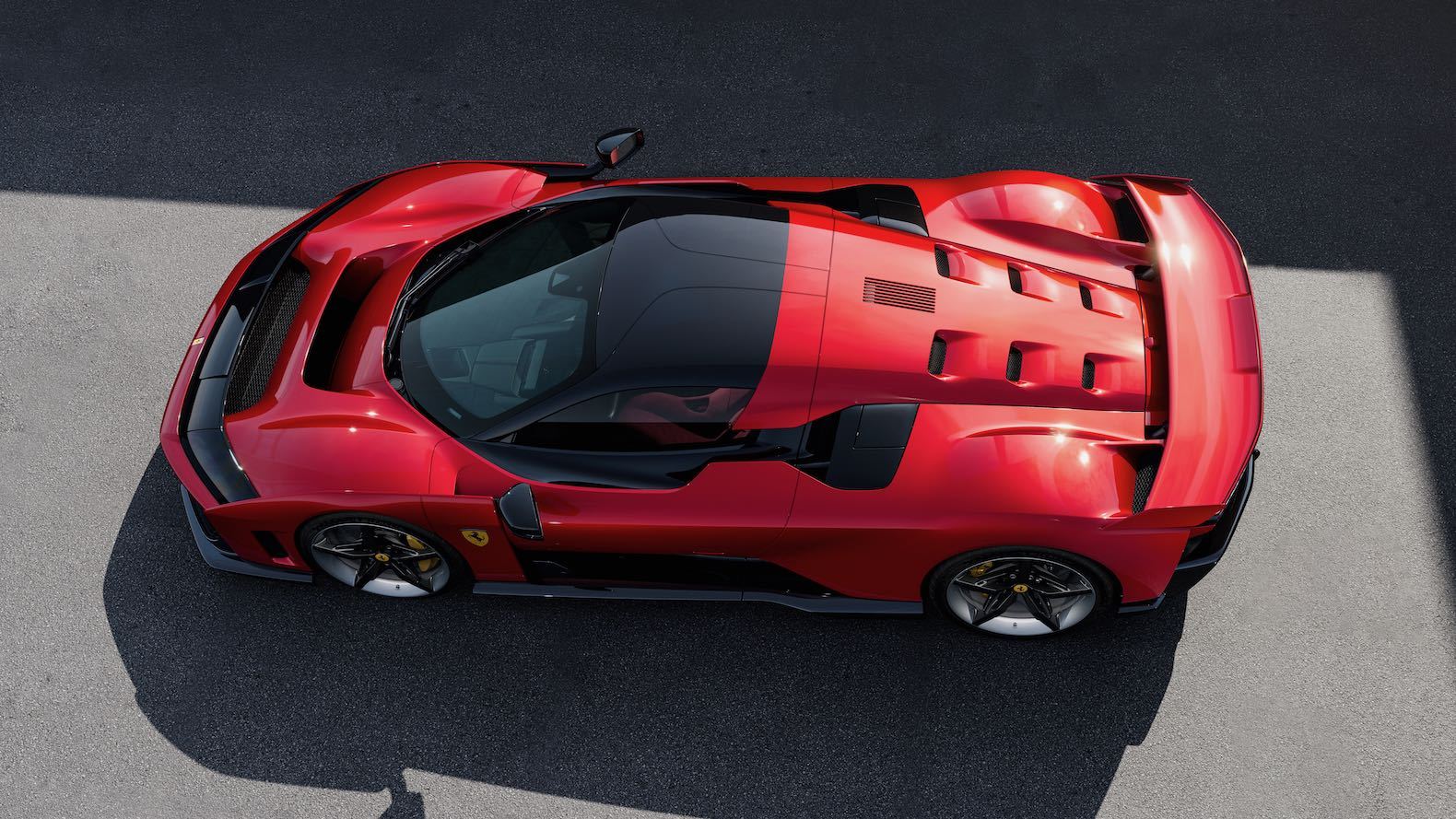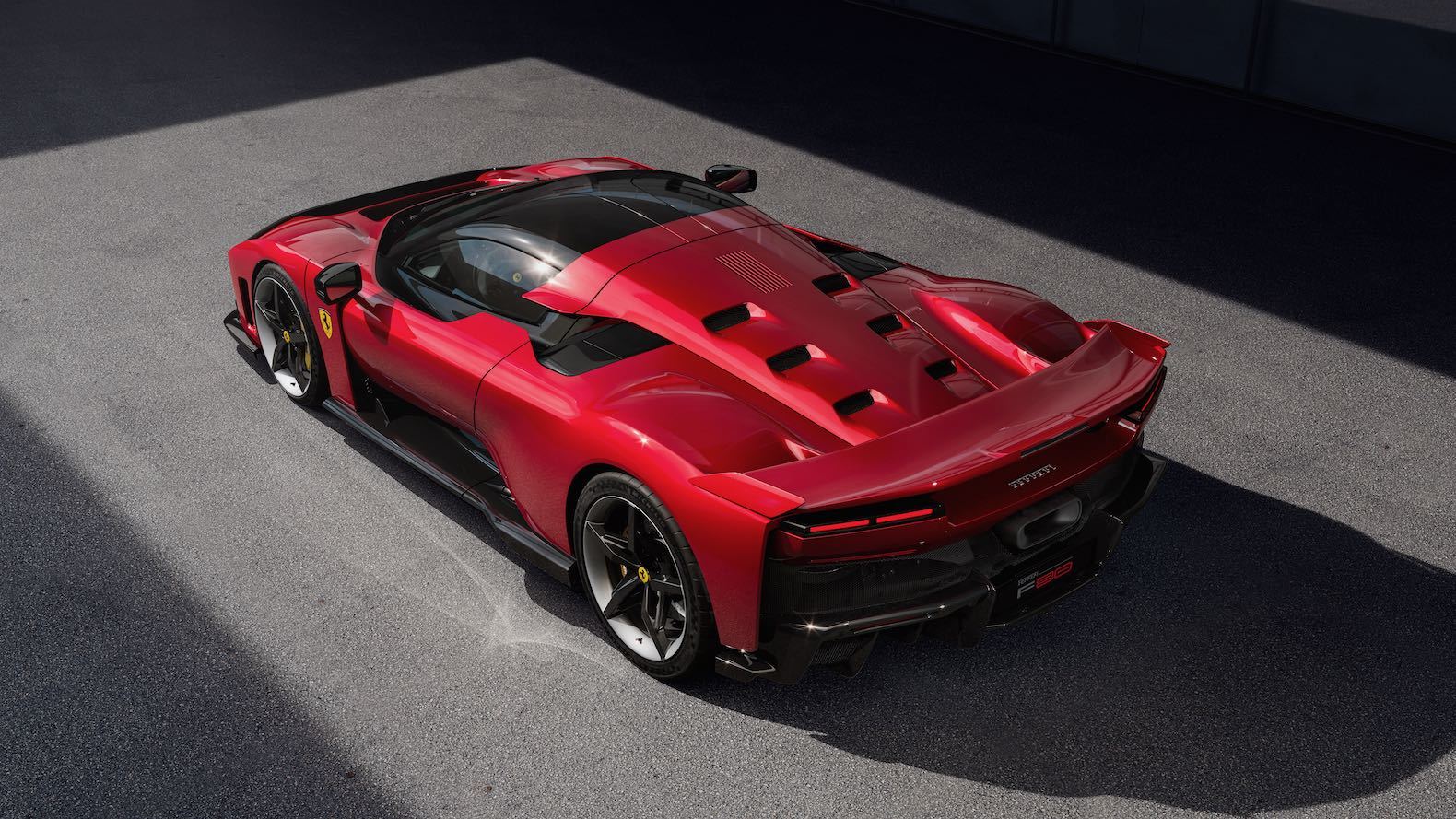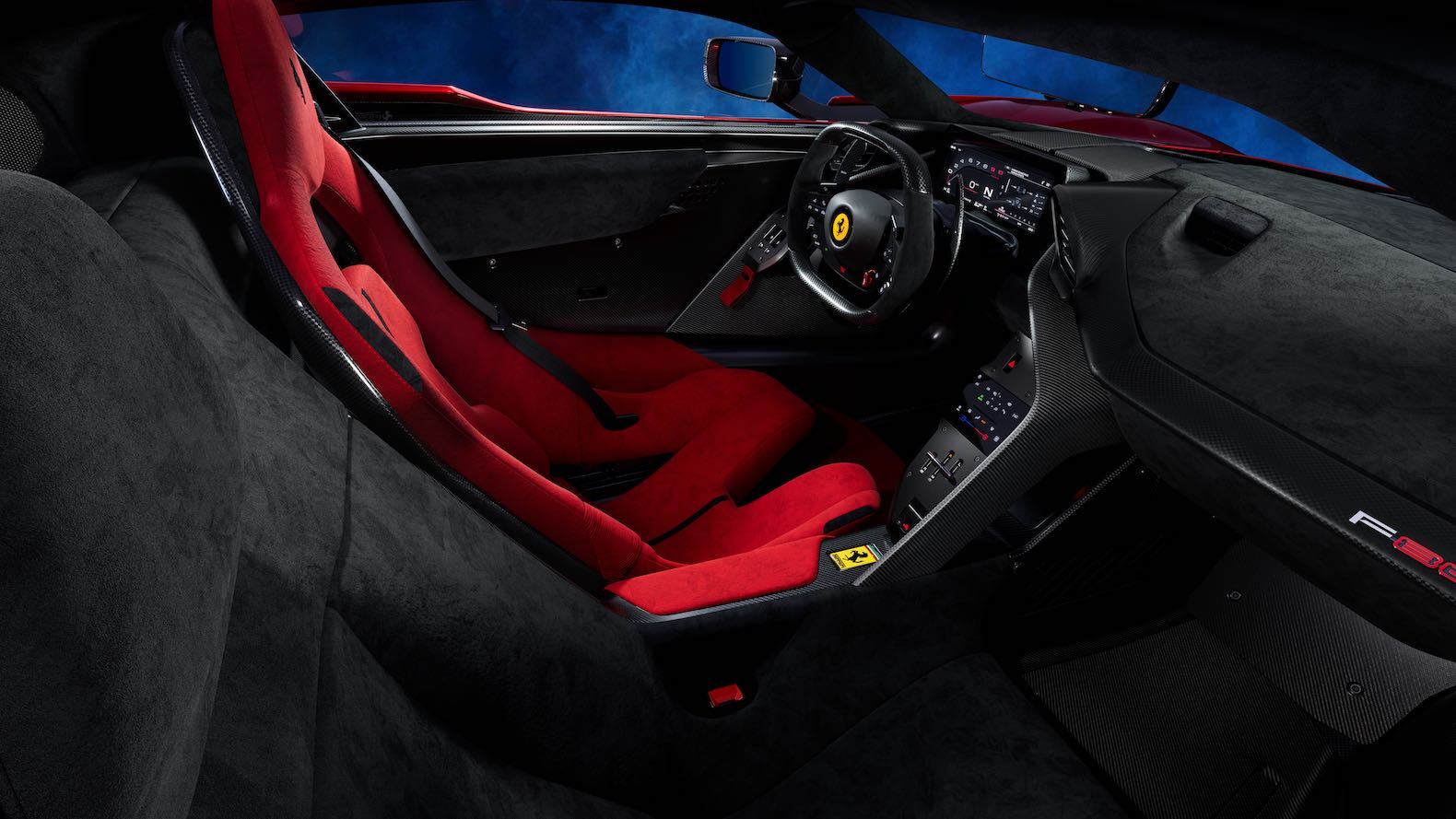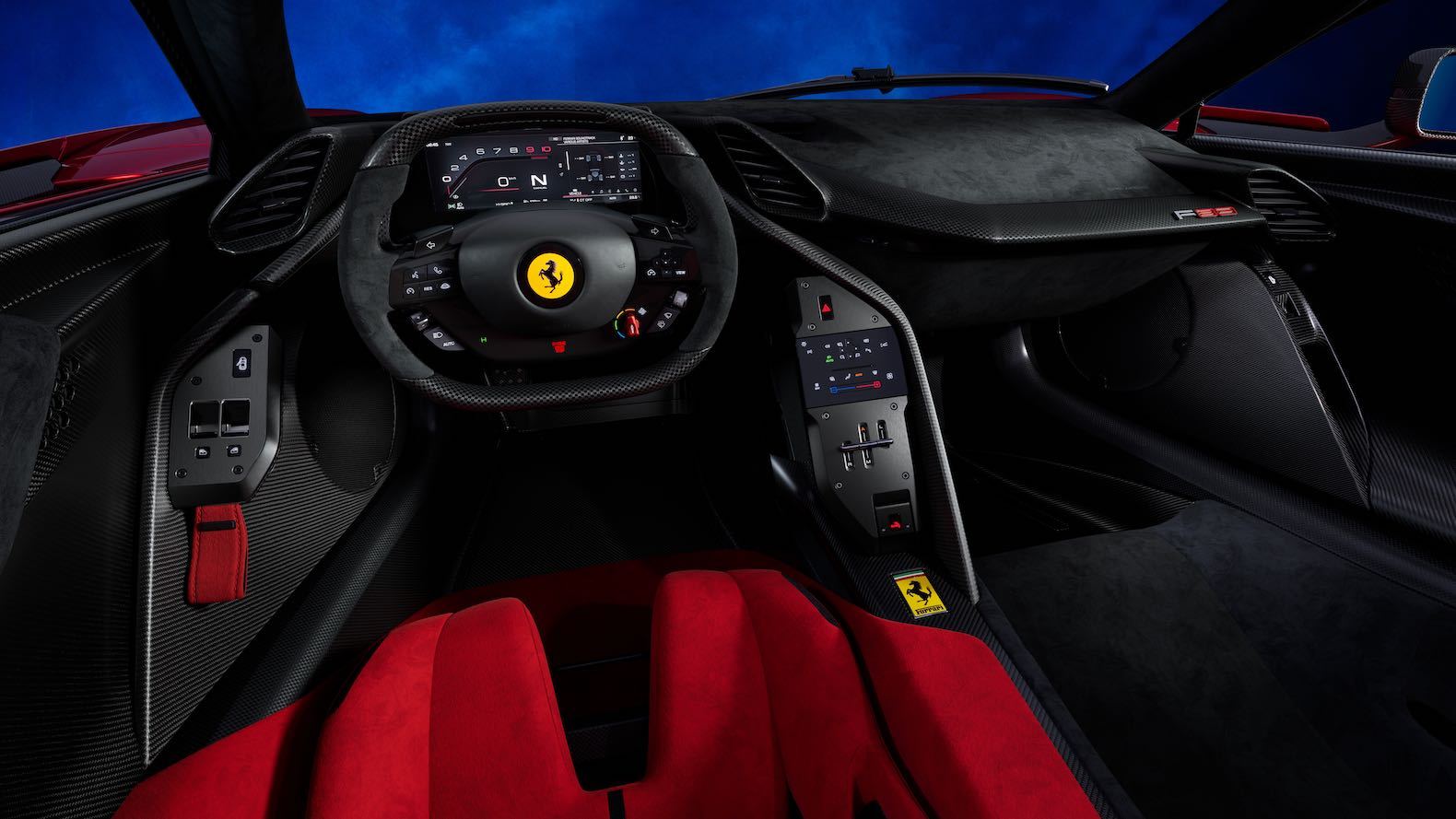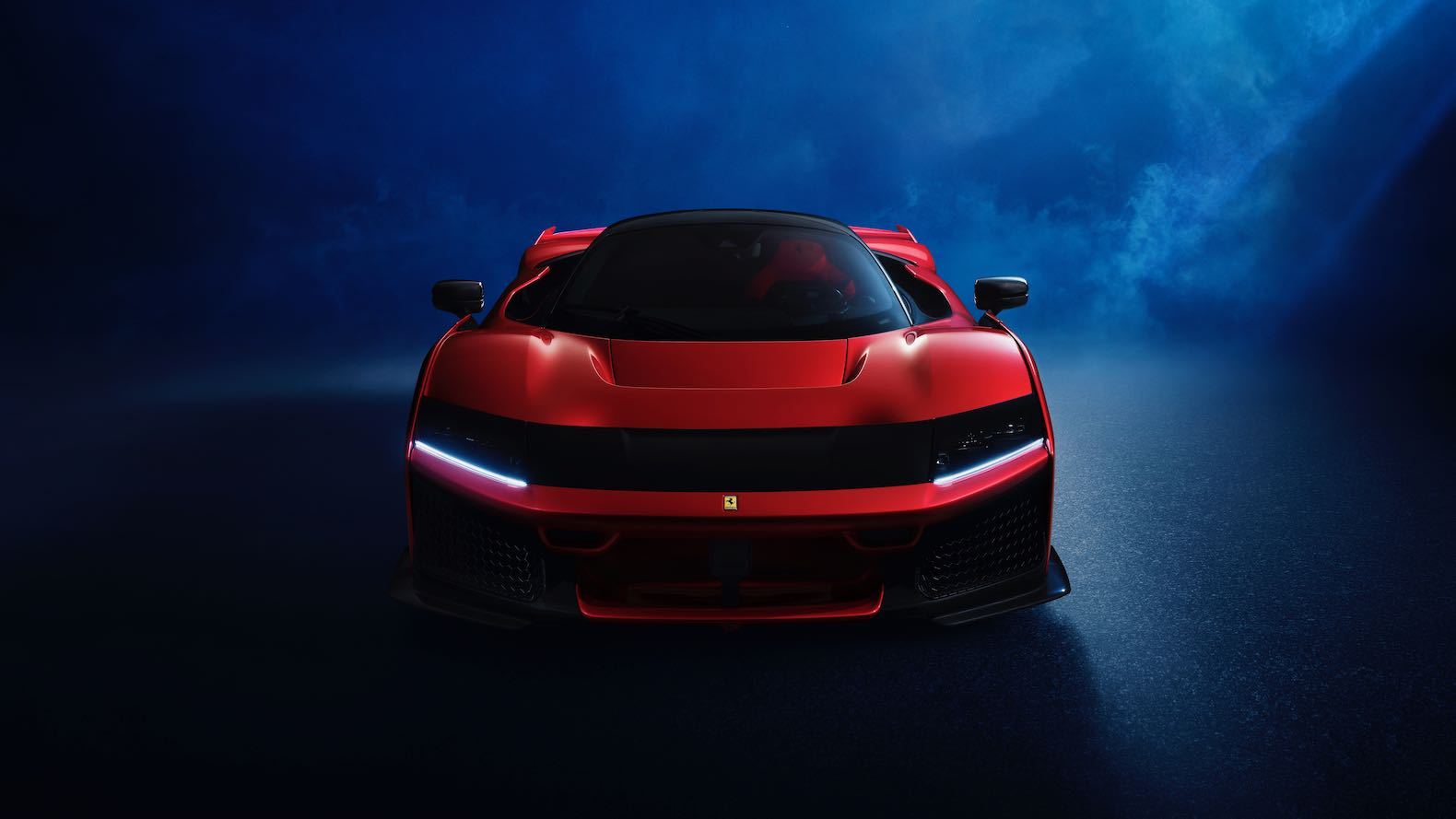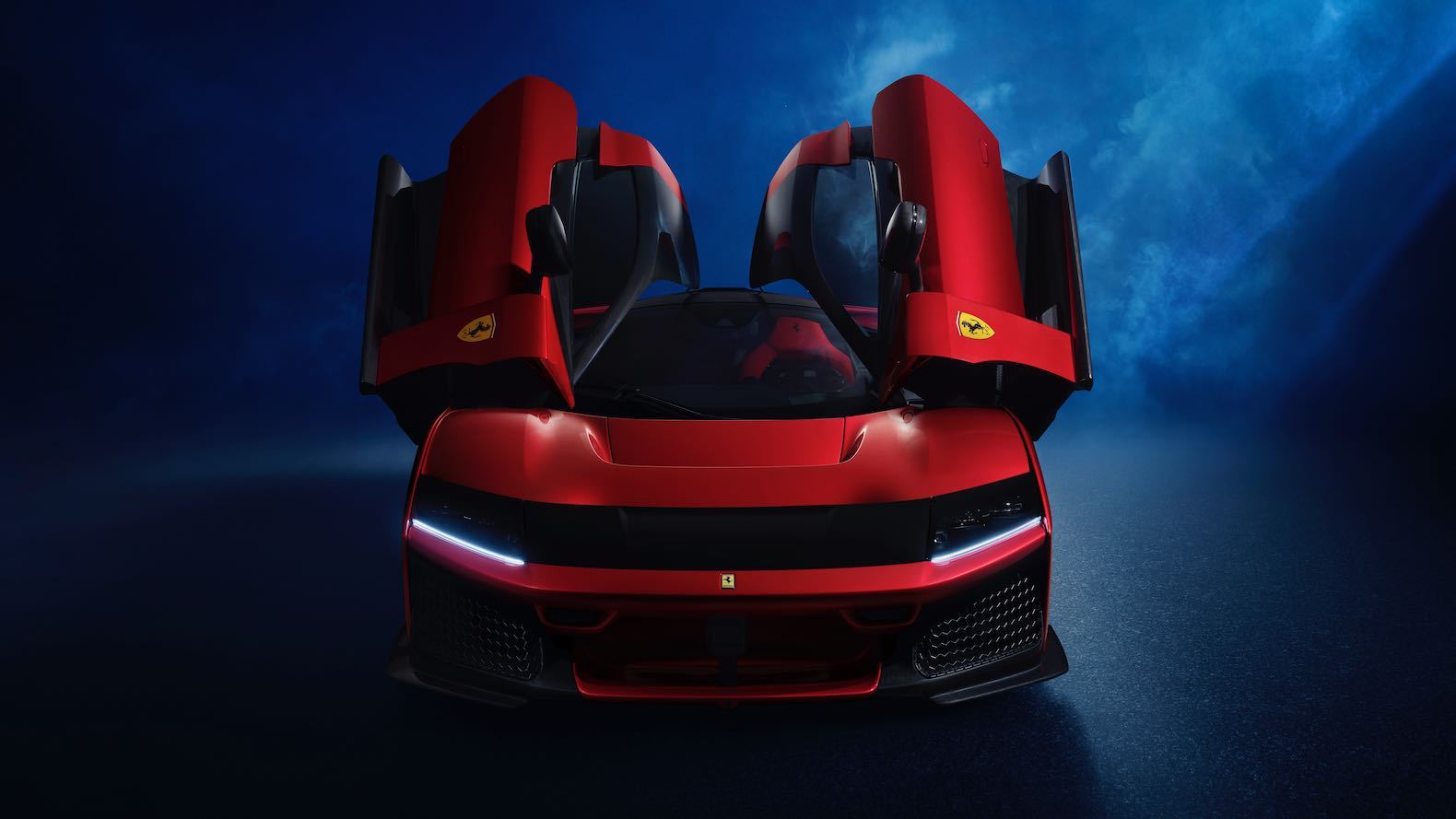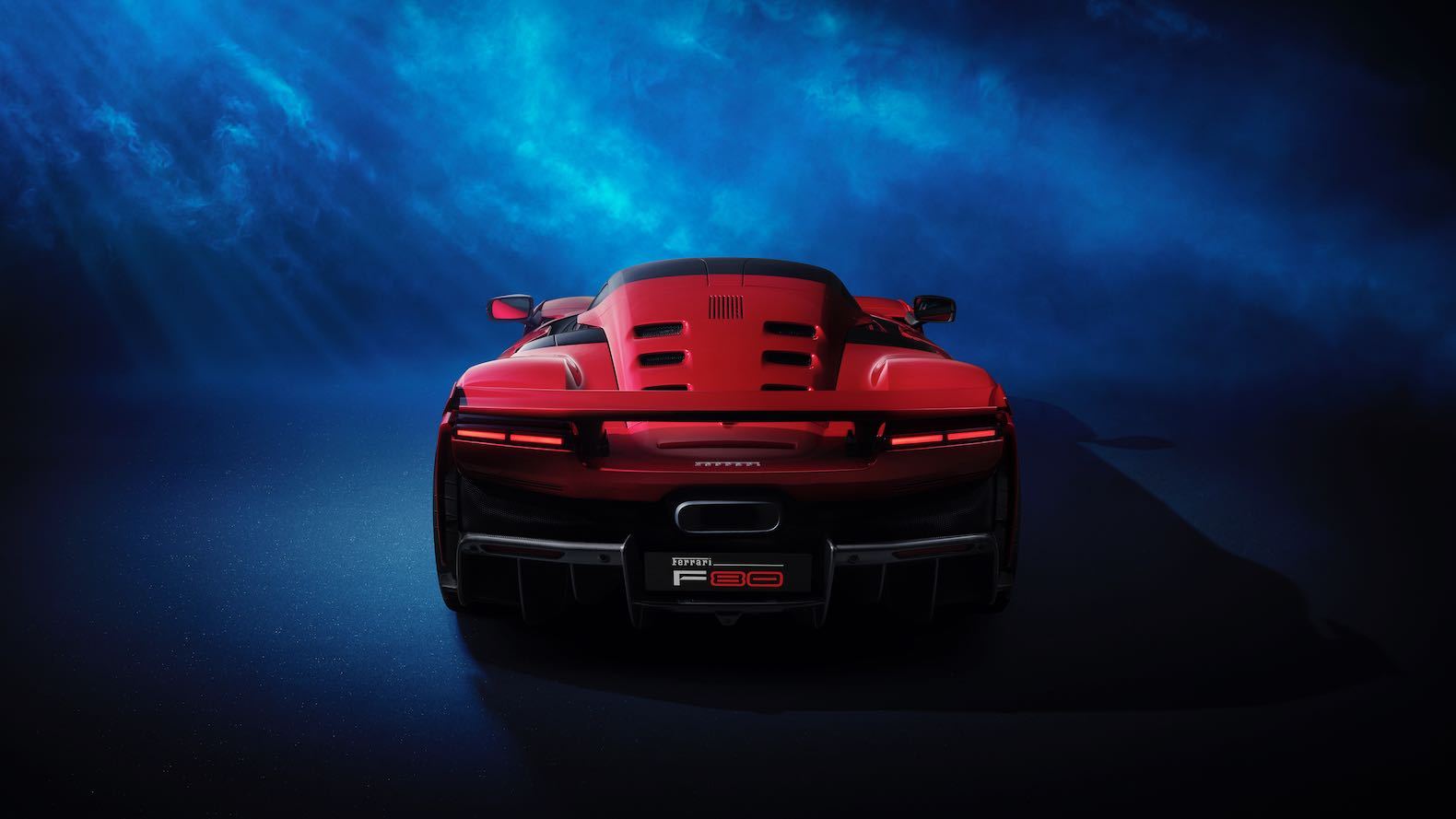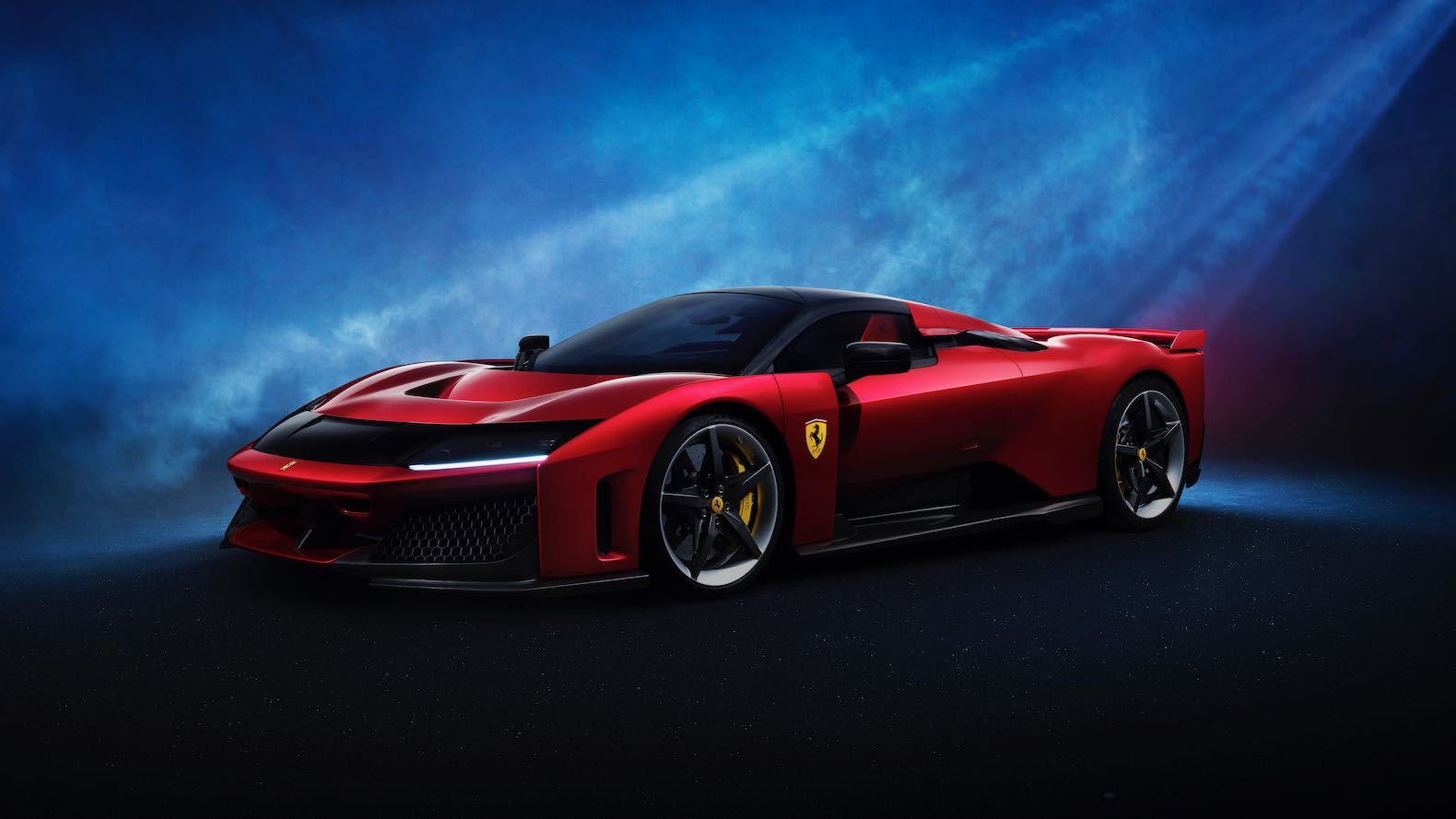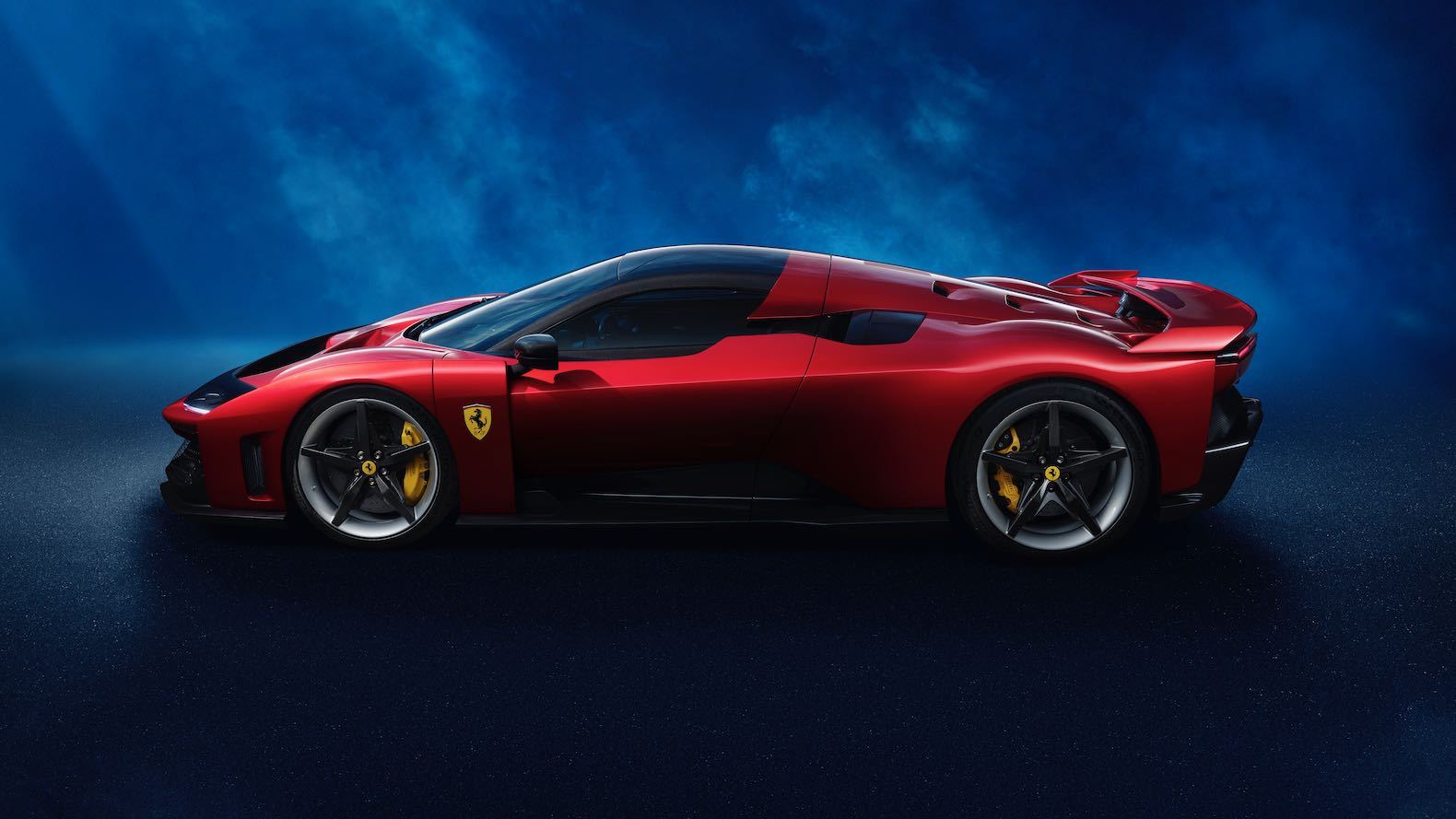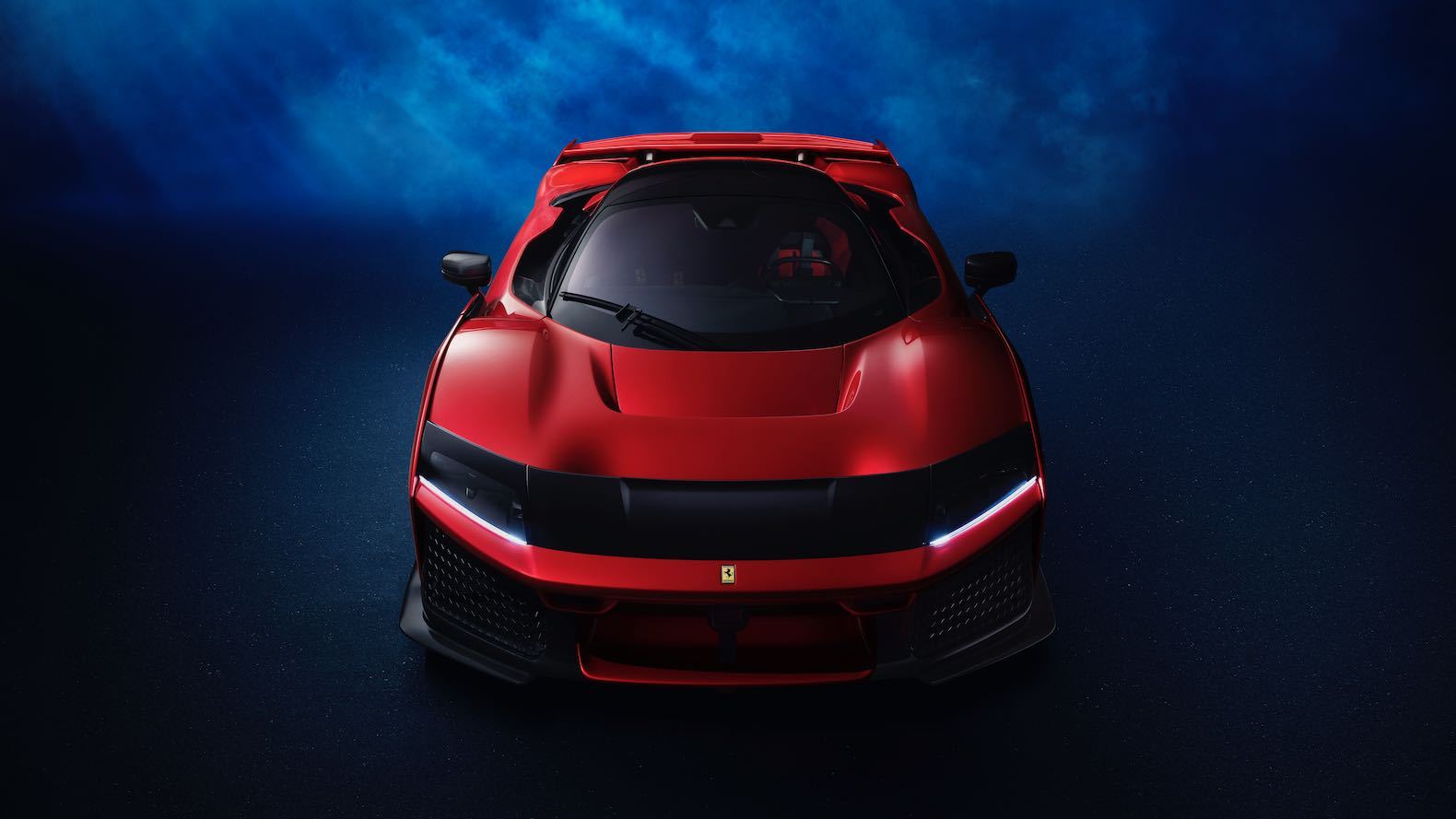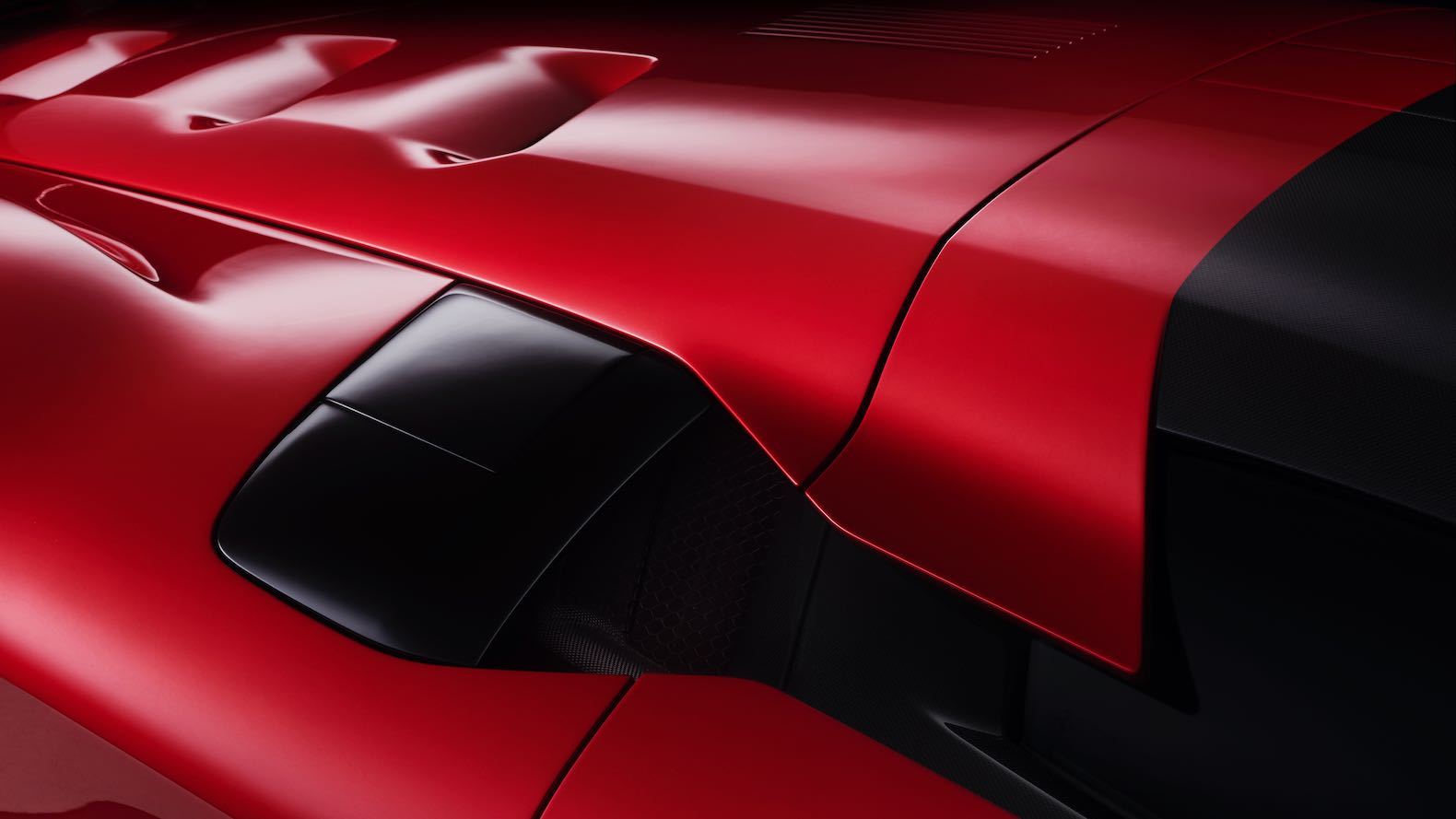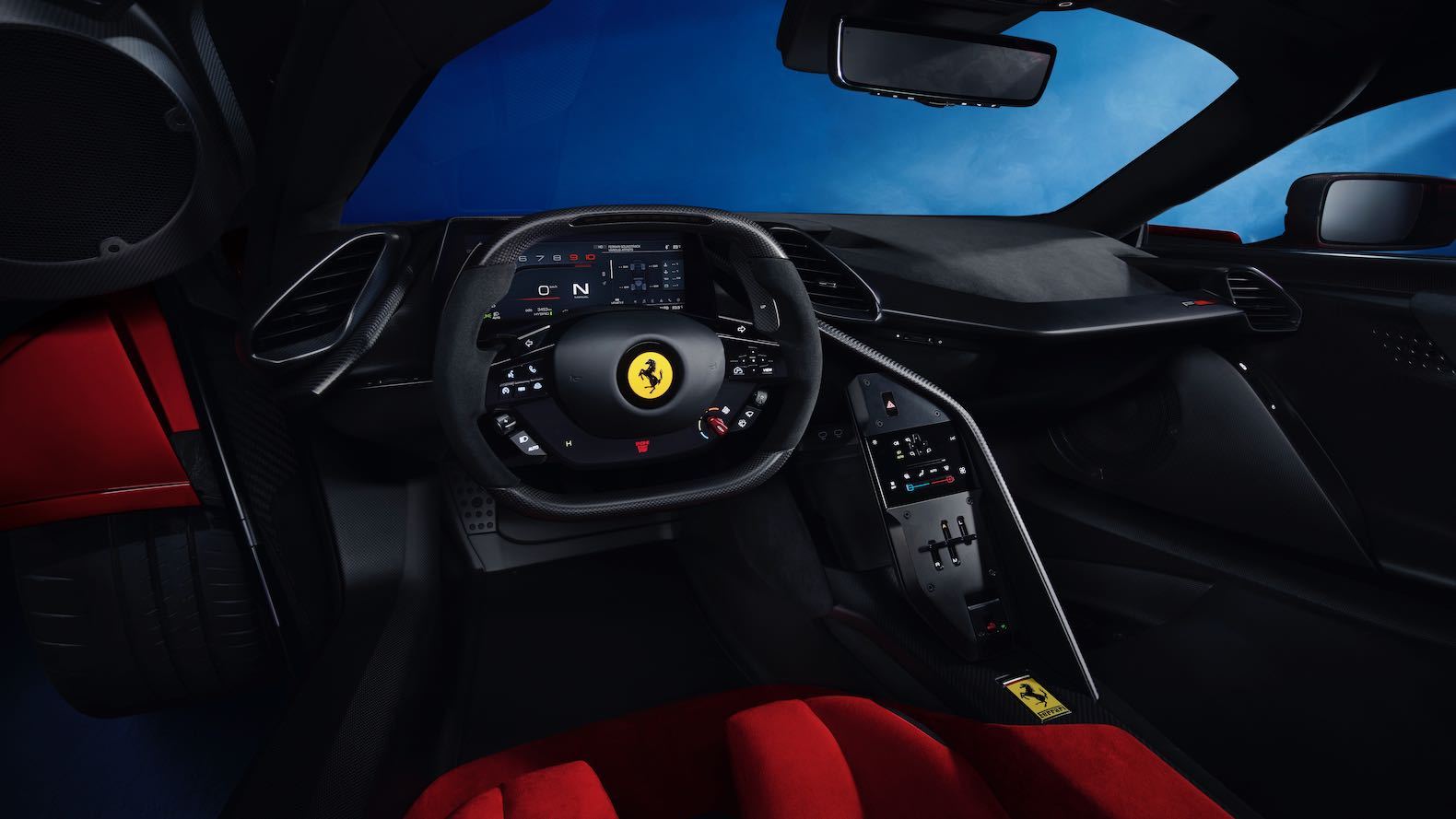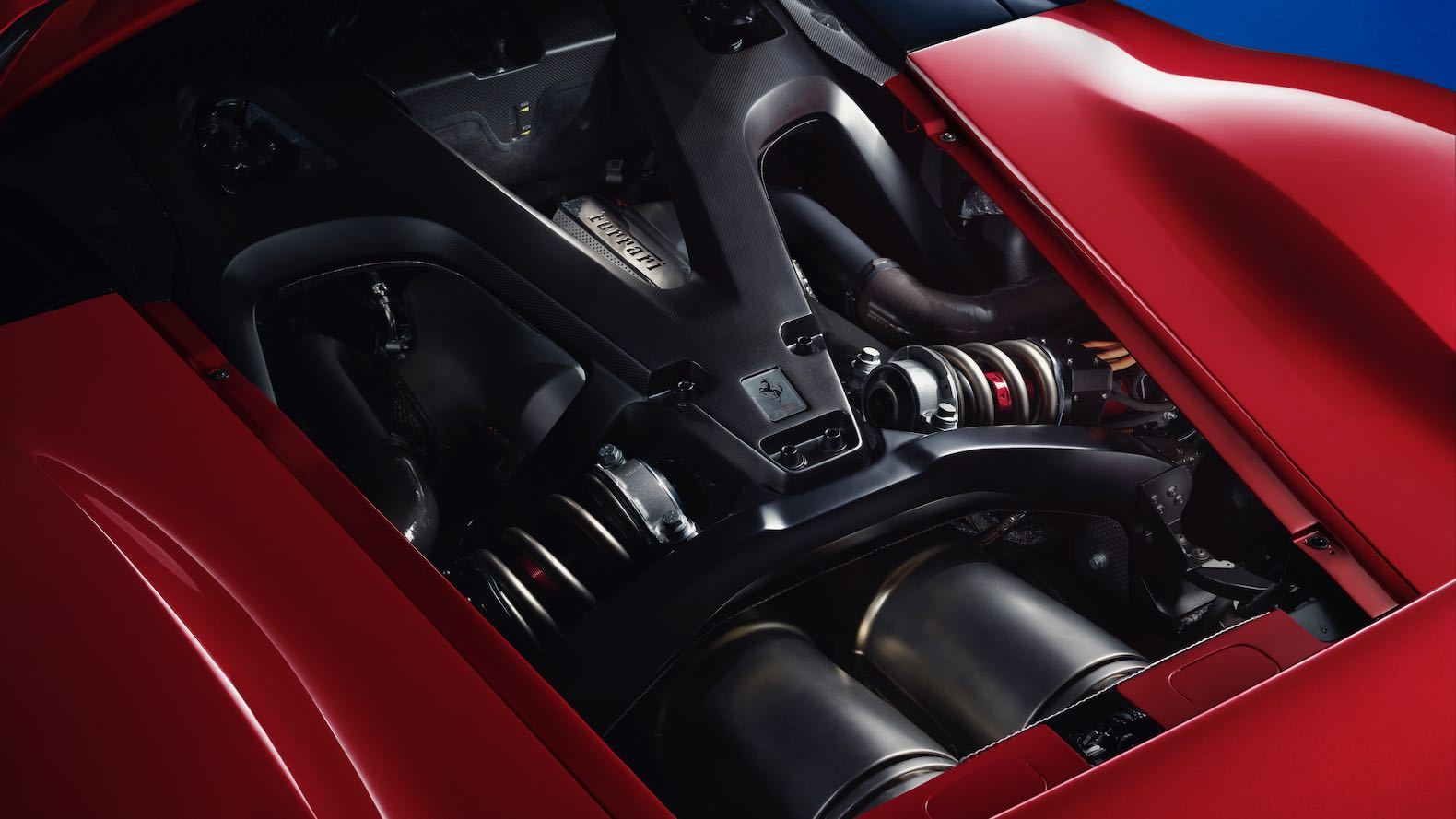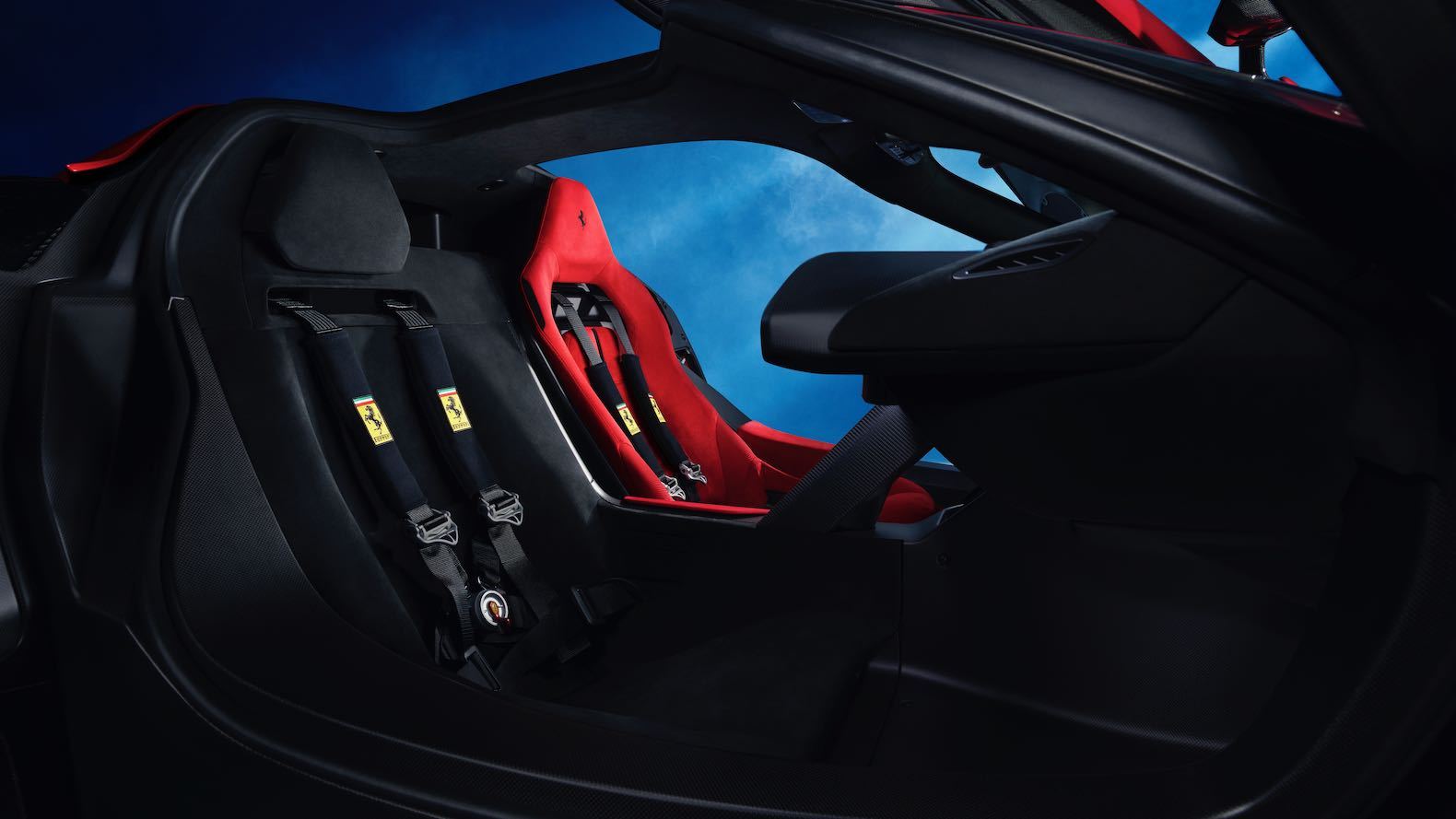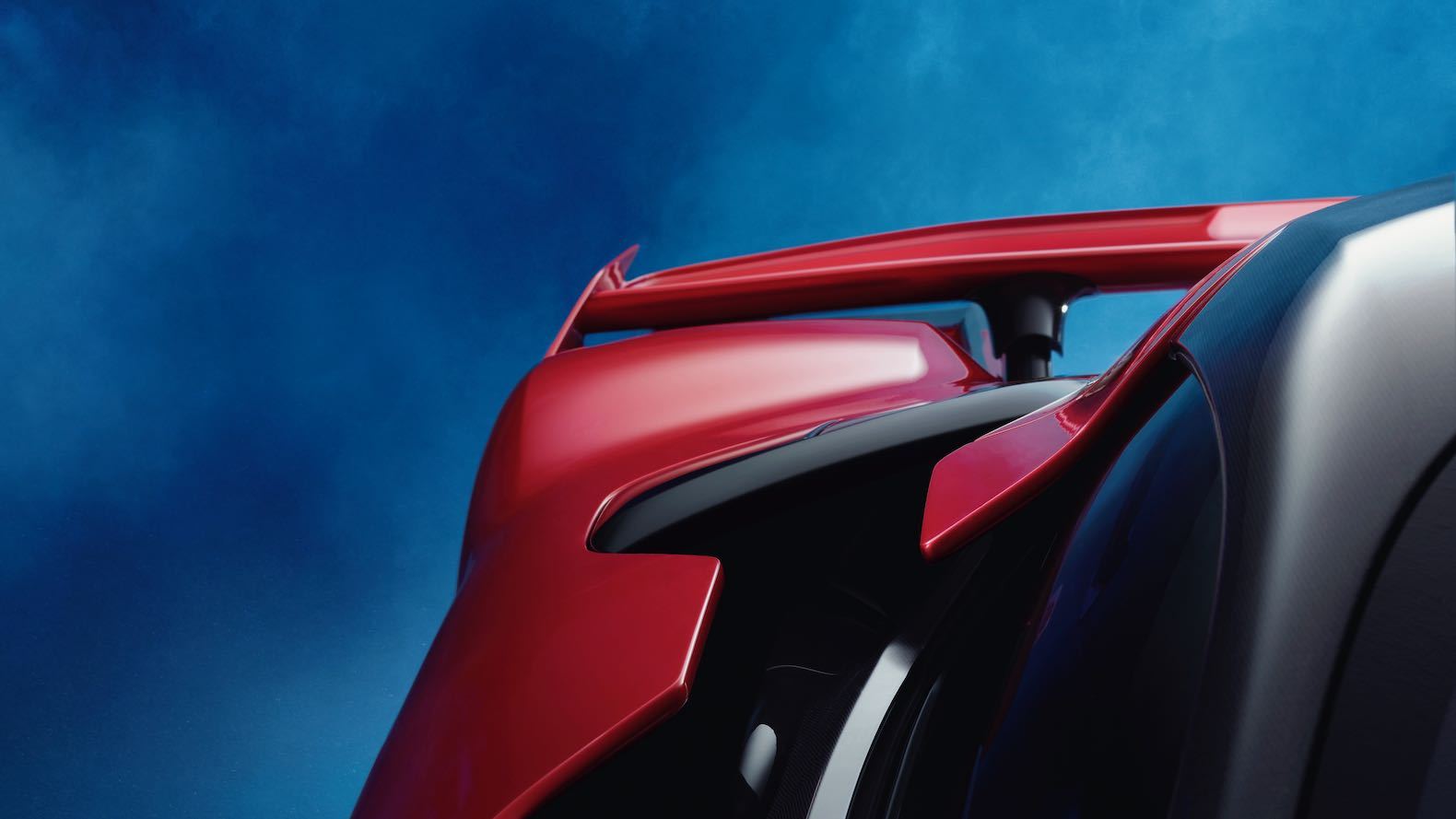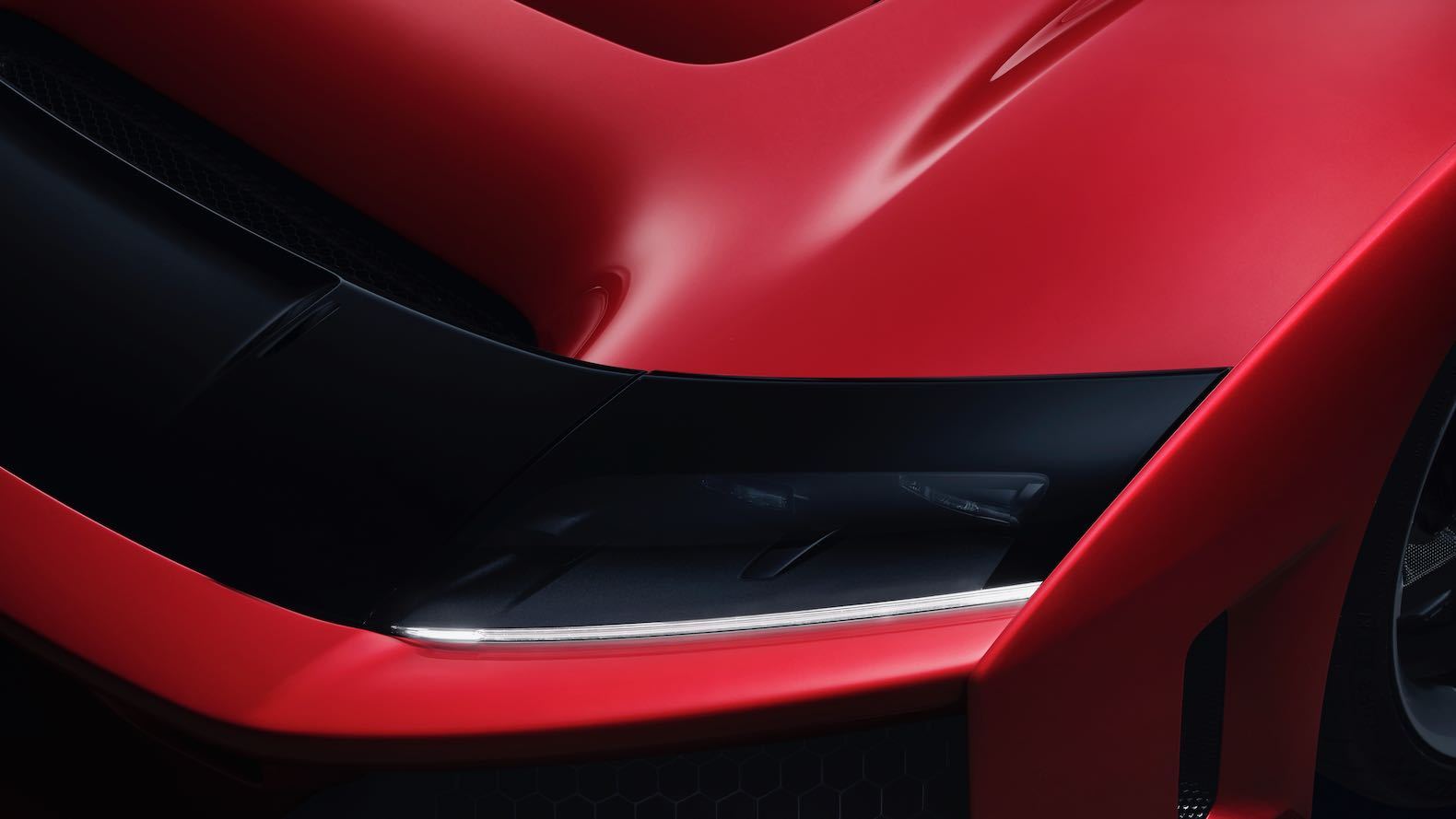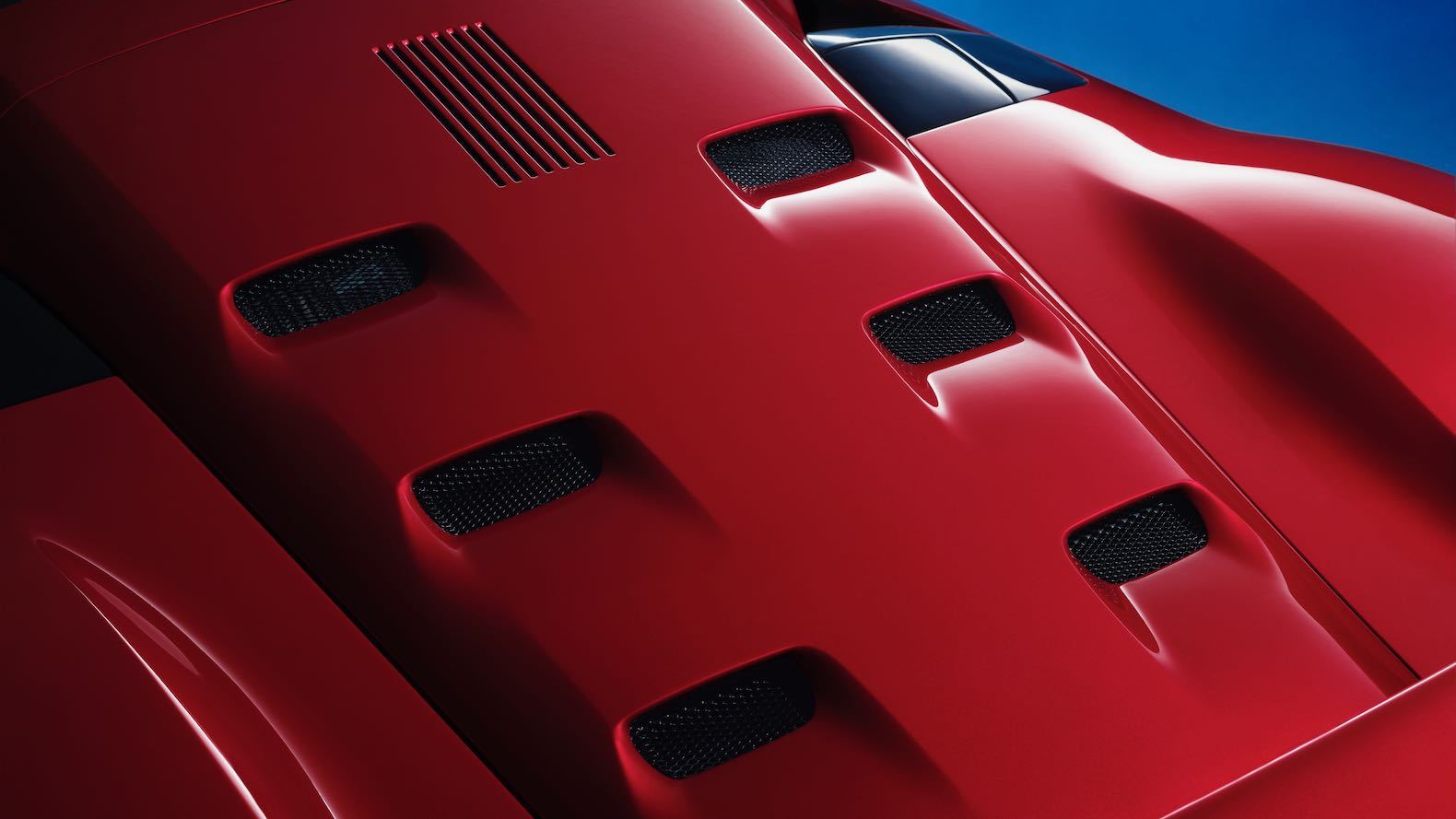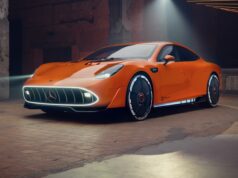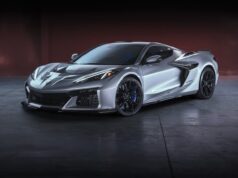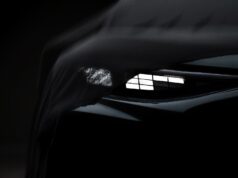Ferrari has revealed its latest halo car, the 2026 Ferrari F80.

While the previous two Ferrari halo cars, the Enzo and the LaFerrari, were powered by V12s, this new F80 arrives with half the cylinders, a 3.0-lt V6 to be specific. Of course, this is not just any old V6, as it produces 888 hp and 627 lb-ft of torque thanks to zero-lag electric superchargers. Add to that another 296 hp from three electric motors, and you’re looking at a total of a whopping 1184 hp. 0-60 comes in 2.1 seconds, and the F80 is able to hit a 217 mph top speed.
Why the change from V12 to V6? Well, Ferrari is using hybrid V6 powertrains in their current F1 and Le Mans cars. Seeing as the F80 is marketed as a race car that you can drive on regular streets, it only makes sense that it carries the same powertrain. The F80 also gets an eight-speed DCT transmission.
The 2026 Ferrari F80 gets other F1-inspired features, such as an active rear wing, numerous aero optimizations, and an “S-Duct” that allows it to generate an astonishing 2,200 lbs of downforce at 155 mph. A deployable flap under the front splitter helps reduce drag when needed, as does an automatically deploying diffuser.
The F80 also gets ultralight 3D-printed components including its suspension arms. An asymmetric carbon fiber chassis, just as in the brand’s racing cars, helps the F80 tip the scales at 3362 pounds. Bringing all that high-tech construction to a stop are Brembo CCM-R Plus brakes.
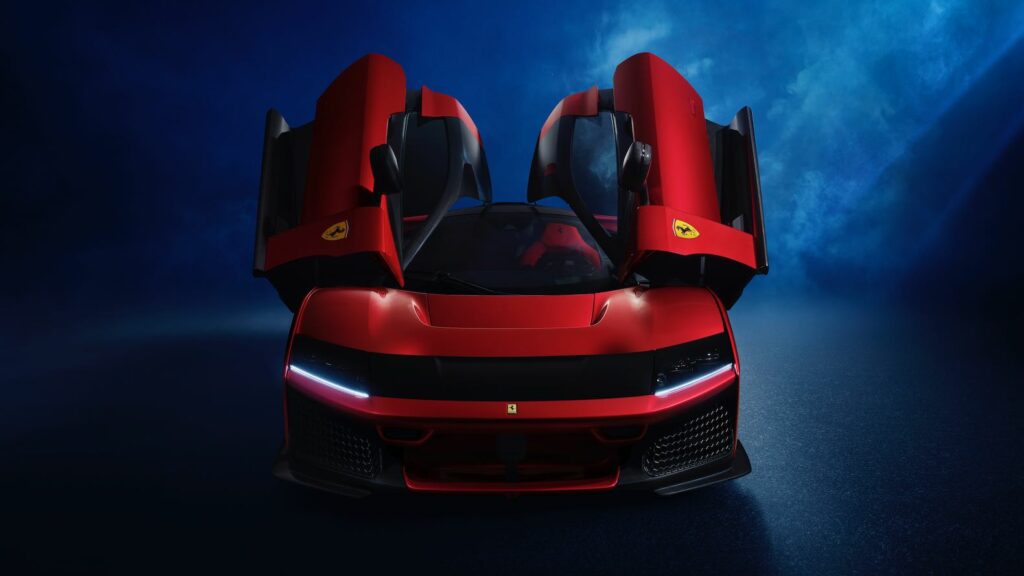
An active “Multimatic” suspension system works to automatically mitigate dive, roll, and squat while keeping an even ride height to optimize, you guessed it, aerodynamics. This system features an impressive set of equipment, including in-board springs, dampers, and actuators, all housed neatly behind those 3D-printed suspension components.
Finally, a trick, “boost optimization mode,” works by having drivers drive around a track before doing a competitive run. This shows the F80’s computer systems where the corners and straights are so it can automatically optimize power boosts for where they are most needed when they go to actually race. The F80 truly embraces a digital world.
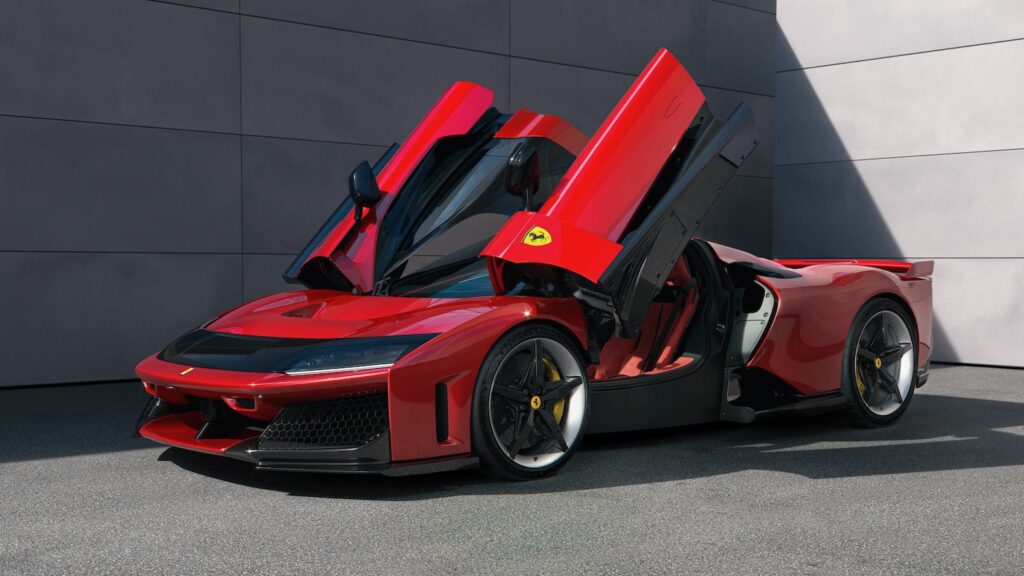
Outside, the 2026 Ferrari F80 takes inspiration from the Le Mans-winning 499P racer, among other Ferraris, with aero-driven styling for best performance. The front recalls the 12Cilindri with a blacked-out section on its nose and angular styling. A suitably swoopy side profile features interesting details like an open cutout connecting the side windows with the air ducts directly behind them, which Ferrari has termed an “Impluvium.” Of course, massive Ferrari emblems make an appearance on the front fenders, not that you would ever need to be reminded of what kind of car this is.

The rear wheels get defined haunches, and six distinct vents are sculpted into the rear engine cover, one for every cylinder. The back features a horizontally oriented design, again let by aerodynamics, such as a large active rear spoiler, thin, linear taillights, and a single giant ovular exhaust set into the middle of the bumper. Of course, no hypercar would be complete without unique doors, with the F80 getting a pair of butterfly units. It’s all unmistakable Ferrari, to say the least.
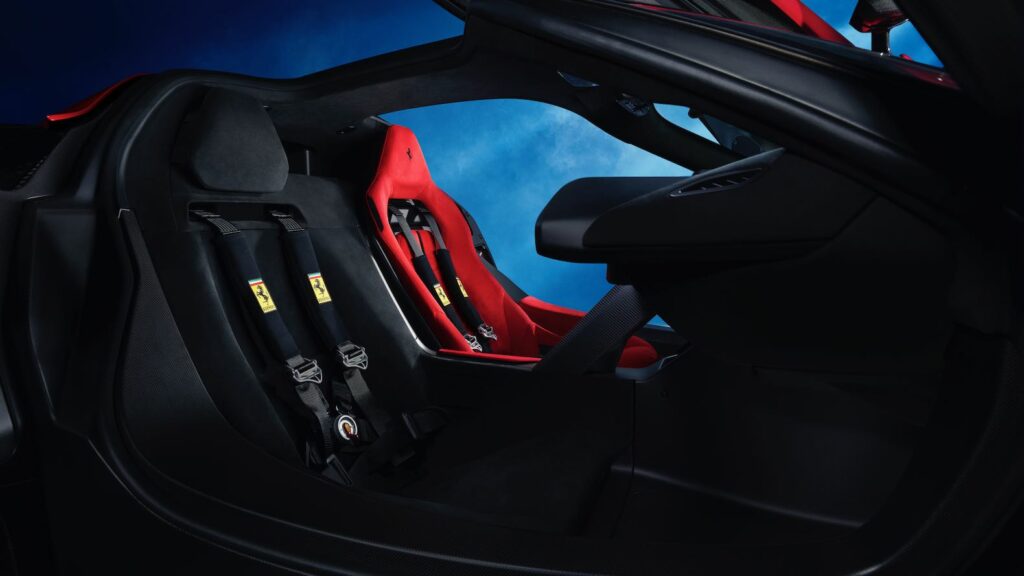
Inside, buyers will be treated to what Ferrari is calling a 1+1 seating arrangement. This means the passenger seat is pushed slightly back from the driver’s seat. This allows the F80 to have a narrower cockpit width while still providing plenty of space for two occupants. The passenger seat is fixed to the interior tub and finished in black Alcantara, while the driver’s seat retains seat adjustment capabilities and is finished in red Alcantara.
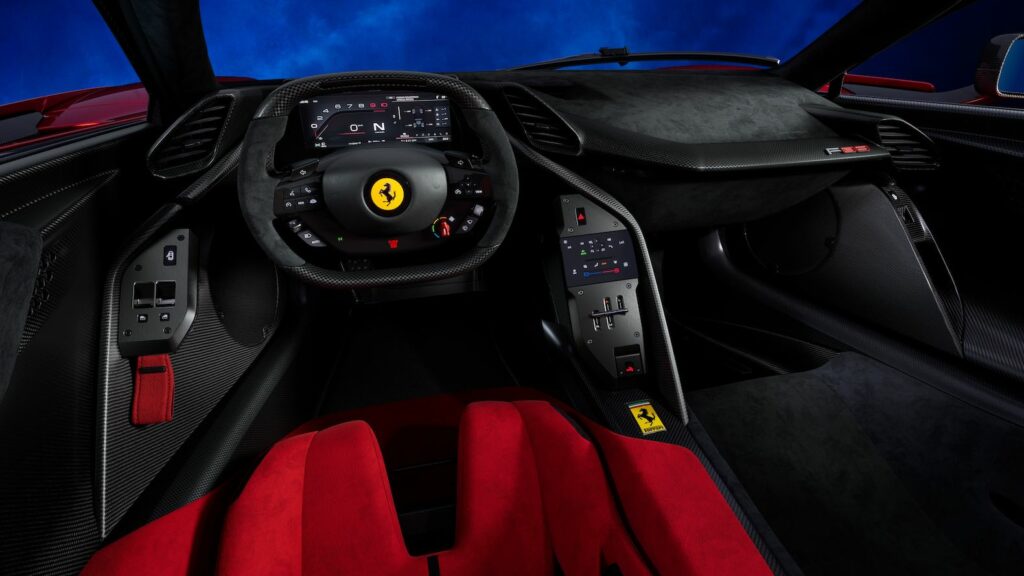
A new squared-off steering wheel features actually physical buttons, replacing the disliked capacitive touch ones on previous Ferraris. The rest of the interior is very driving-focused; there are no huge screens here, just purpose-driven switch gear, a straightforward climate control panel, carbon fiber, and some vents.
Ferarri will build 799 examples of the F80, which should start reaching customers in the US in early 2026 at a starting price of $3.9 million.


